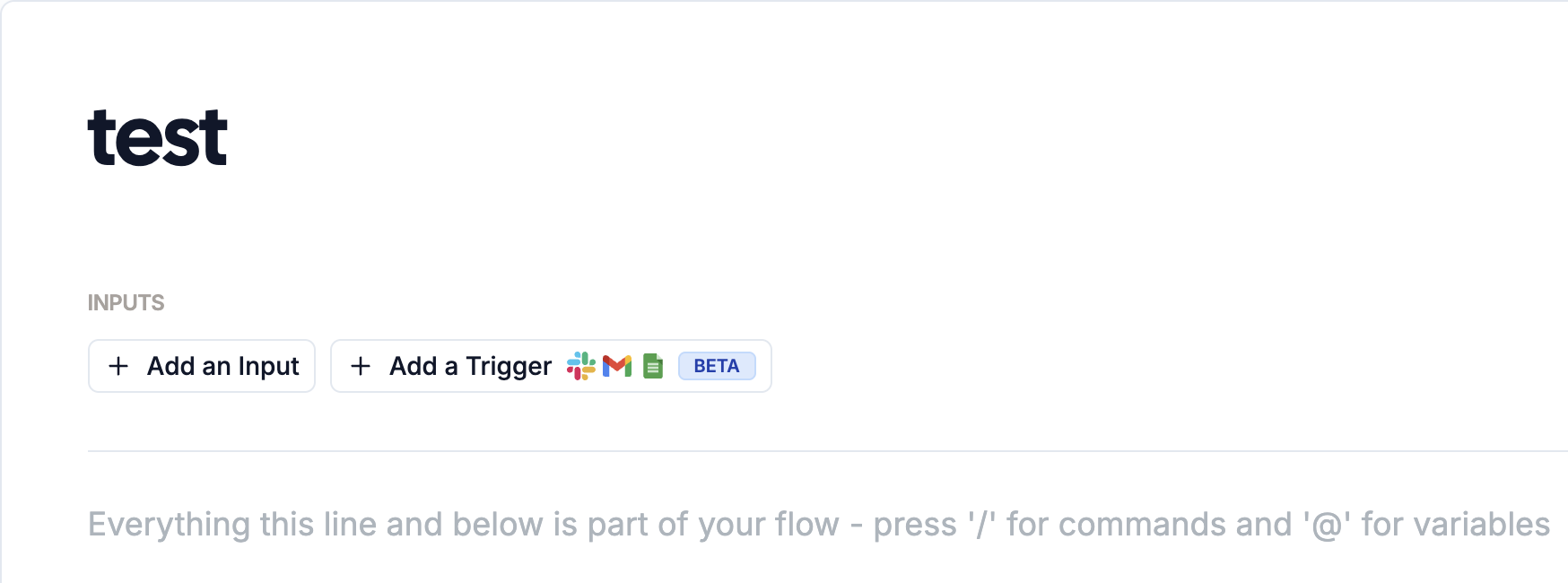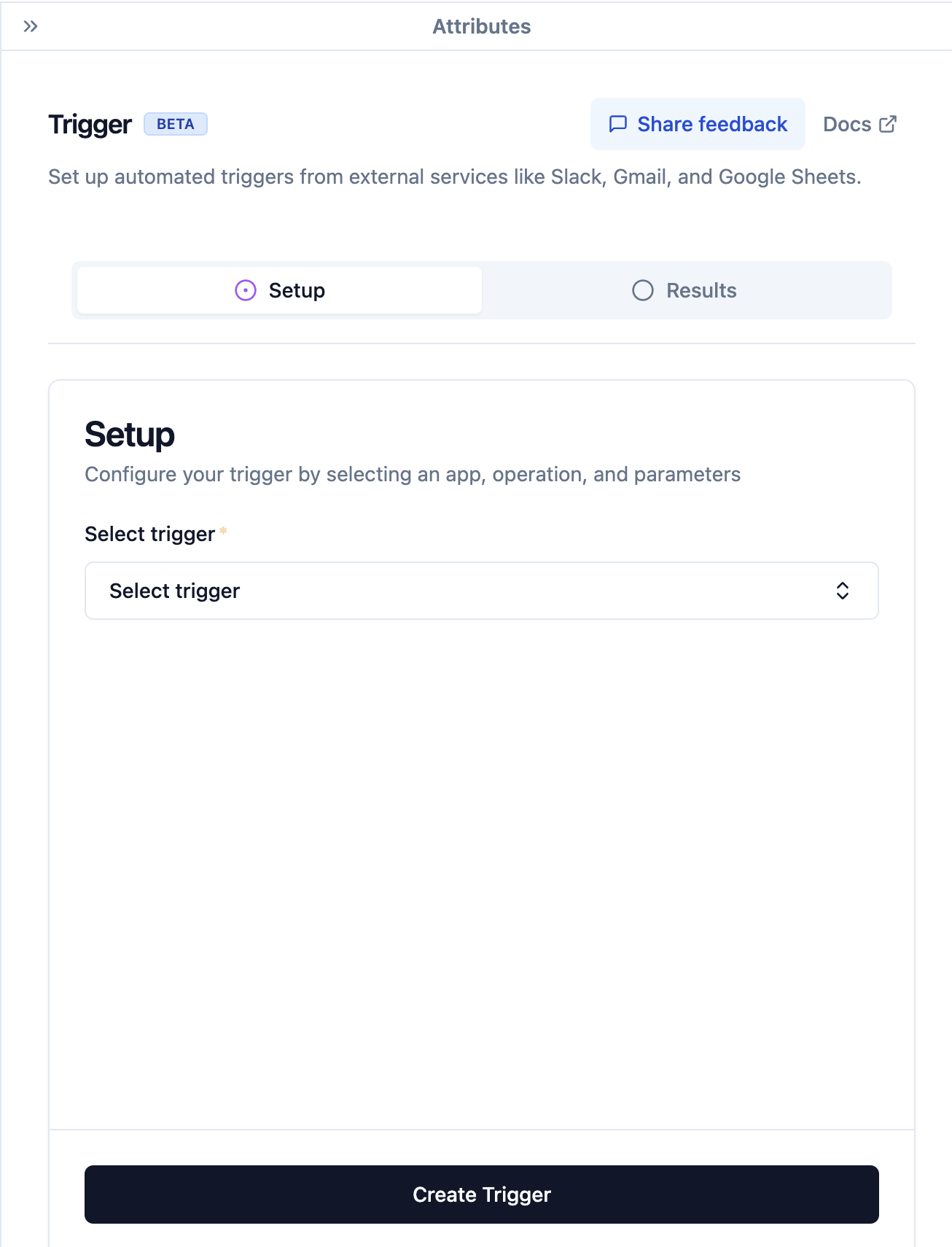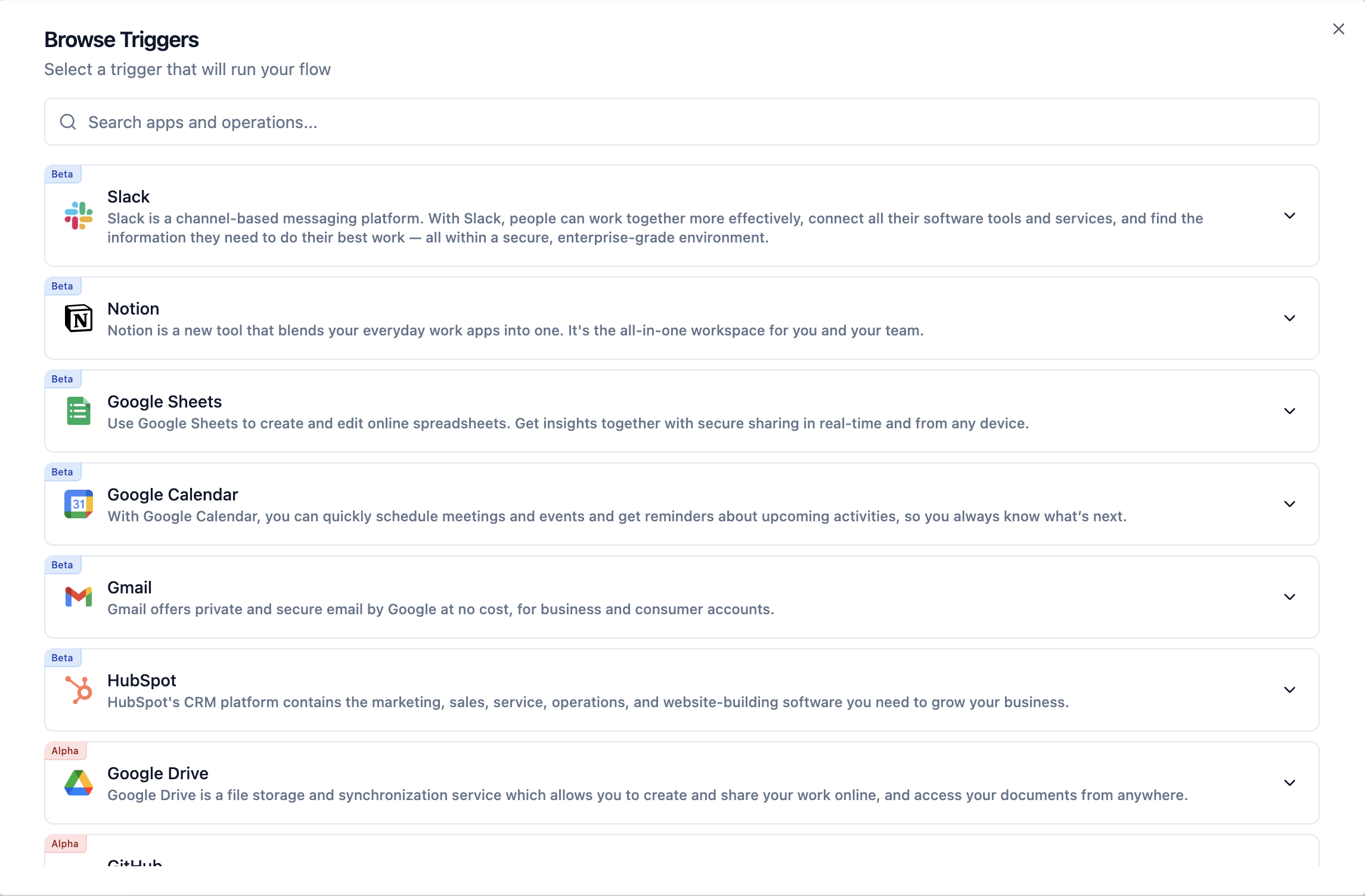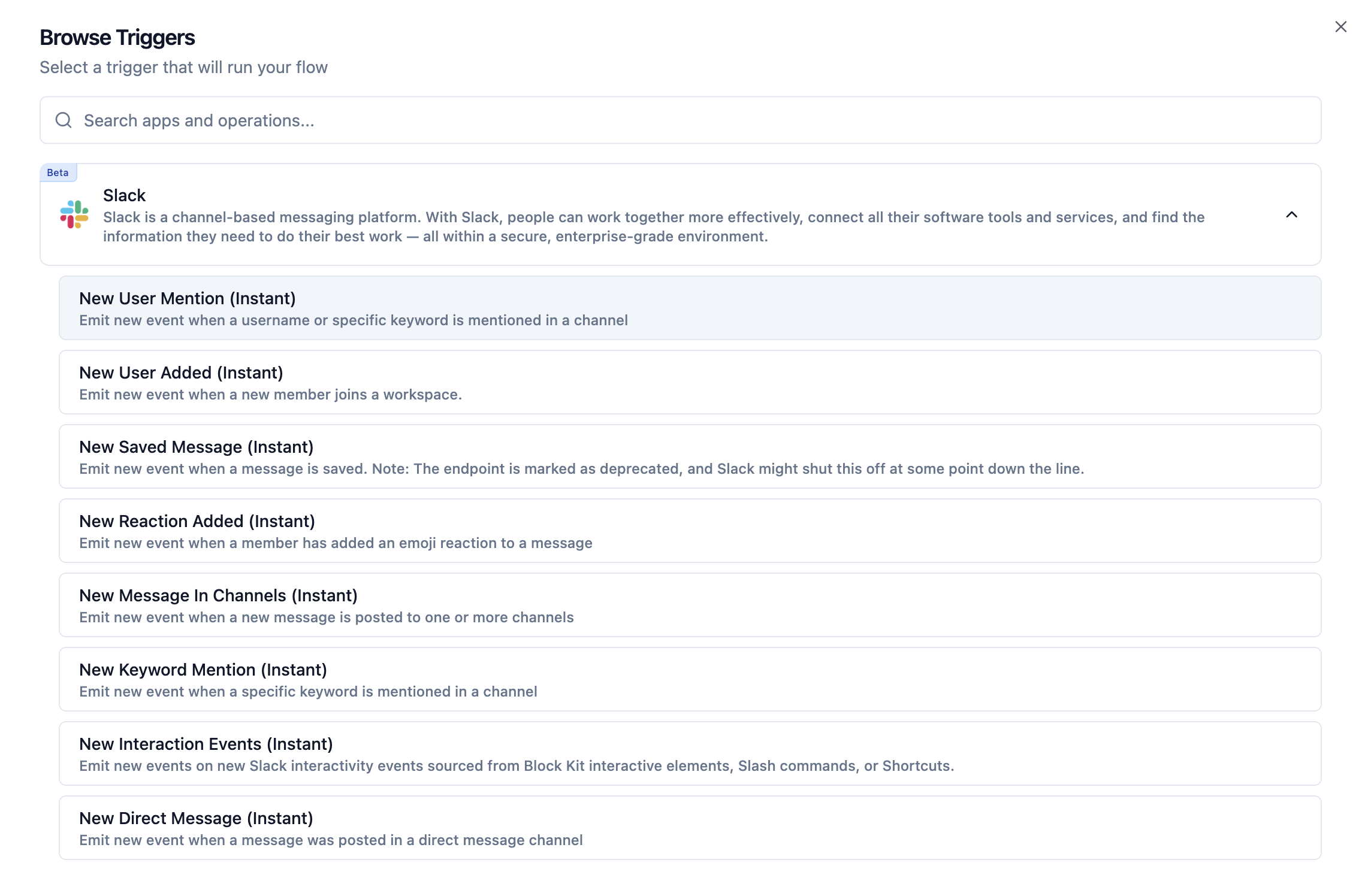Skip to main contentWhat does it do?
Triggers allow you to automatically start your WordApp in response to external events, turning your flows into powerful, automated workflows. Rather than manually running your WordApp each time, triggers let you define specific events that will launch your flow - whether that’s receiving an email, getting a message in Slack, a scheduled time each day, or any of thousands of other possible trigger events.
Triggers seamlessly integrate with your existing WordApps, providing the ability to:
- Schedule your WordApp to run at specific times (daily, weekly, or custom schedules)
- Start your flow when data changes in external systems like databases or CRMs
- Process incoming communications from email, Slack, or other messaging platforms
- Listen for webhooks or API events from your own systems or third-party services
- Chain multiple applications together in powerful automation sequences
By connecting your WordApps to real-world events through triggers, you can create fully automated AI workflows that operate independently, processing information and taking actions without manual intervention. This feature builds upon Wordware’s existing Zapier integration but makes the experience more streamlined and native to the Wordware platform.
How do I use it?
To create a trigger for your WordApp, first click Add a Trigger found in the input bar, just above the start of your flow in the editor.
 You’ll then be prompted in the attributes editor to select the trigger you would like.
You’ll then be prompted in the attributes editor to select the trigger you would like.
 When you click
When you click Select Trigger you will have access to a wide range of triggers to choose from that will run your flow. They are divided by product, with the arrow to the right providing more granularity.
 For example, clicking on the drop-down on the Slack trigger gives access to a range of different trigger events, as seen below.
For example, clicking on the drop-down on the Slack trigger gives access to a range of different trigger events, as seen below.
 There are thousands of trigger actions, automatically running your WordApps without you having to click a button!
There are thousands of trigger actions, automatically running your WordApps without you having to click a button!  You’ll then be prompted in the attributes editor to select the trigger you would like.
You’ll then be prompted in the attributes editor to select the trigger you would like.
 When you click
When you click  For example, clicking on the drop-down on the Slack trigger gives access to a range of different trigger events, as seen below.
For example, clicking on the drop-down on the Slack trigger gives access to a range of different trigger events, as seen below.
 There are thousands of trigger actions, automatically running your WordApps without you having to click a button!
There are thousands of trigger actions, automatically running your WordApps without you having to click a button!
